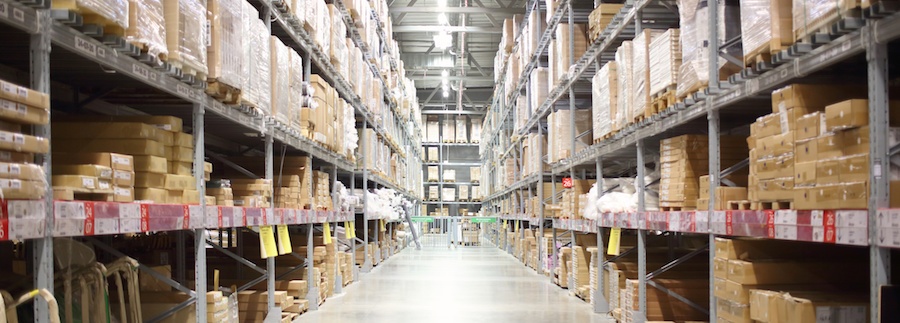
Each “hiccup” in a workflow is another roadblock standing between a task and a goal. In a warehouse setting, the cause-effect relationship between these issues and their effect on deadlines can be very easy to spot. Fixing it, however, is not quite so simple.
So, when you’re looking to streamline your operations, where do you begin?
Knowing where waste is most likely lurking in your warehouse will help you act with authority, find solutions quickly, and support overall productivity on behalf of your company and staff. While “waste” may be the predominant complaint from the C-suite on down, that term covers a lot of ground: you will need to narrow it down to apply a fix.
A few questions can help illuminate the path:
- Do you feel as if your employees aren’t working as efficiently as possible?
- Are you worried you’re wasting resources on space?
- Are you using service solutions that aren’t the optimal fit?
Figuring out if that “waste” is time-, effort-, or money-related will allow you to customize your solutions to those concerns.
The easiest way to find those solutions is to determine what led to your problem in the first place. That issue is likely to be the most visible––and therefore the most concerning––one in your operational workflow.
After you’ve assessed where the issue started, try applying one of these filter-solution pairs; most problems will fall into one of four basic “warehouse management waste” categories regarding resources:
1. Your Warehouse is Complex, But Unstandardized
Processes can sometimes lag behind innovations, dragging outdated workflows along with them like a stubborn albatross. Is there any part of your workflow you could remove without causing a slowdown or damaging the end result? When was the last time you considered your workflow from start to finish?
Here’s a common trap we fall into
“Working around” an outdated modality is easier than changing it. One employee tells a new hire, who tells a new hire, and so on. Eventually, that unnecessary complexity becomes integral, and no one thinks to question it. Until now, of course.
A better path:
Look over your entire workflow from beginning to end, and consider if it would still operate if you removed process X or step Y.
Is it necessary to the overall functionality of the product’s journey? Does it waste valuable pick/pack/stock time and take working time away from other areas? You may be surprised at how many unnecessary “relic” tasks are acting as obstacles in your workflow.
Also, examine your mindset when it comes to your custom processes. Too often, we let our need to customize a product get in the way of honing in on a standard process for that product. Having the mindset of, “How do we standard certain aspects of our process across the board?” instead of, “We can’t standardize everything” helps you find a starting point before you work through the rest.
2. Your Employees Aren’t Well-Allocated
If you’ve ever placed an employee in a role out of immediate necessity, you’re in good company. The issue with that practice, however, is a failure to revisit the placement.
Most of those immediate necessities are temporary in nature, and you could reallocate the employee in question after the proverbial fire was extinguished. The employee might be stuck––potentially for years––in a low-skill job, despite impressive qualifications that could be put to better use in another position.
Worse, you could be paying the employee for their capability, rather than the job they’re actually performing: a waste of hiring resources and budget.
A better path:
Make a point to list potential skills, certifications, and strengths in each new employee’s personnel file, updating when it’s appropriate to do so. When a need opens up in the warehouse, commit to scanning these notes before looking outside the company for an individual to fill the need.

3. Your Hiring Practices Aren’t Stable
Finding the right volume of employees often feels like a never-ending puzzle, but if you aren’t paying enough attention to the process, your company is paying dearly.
You may find yourself with a shortage of workers and a surplus of orders resulting in delays, missed shipments, and other issues that damage brand loyalty––not to mention the premiums involved in quickly padding your workforce.
Too many workers lead to a steady stream of wasted money, which could be used to improve infrastructure or other non-employee functions of your warehouse.
A better path:
Communicate with your staff and observe operations where the work is being done. Is everyone on the floor engaged and working, or are some individuals standing idly? Are they doing the job the way it should be done? What do employees say when they’re asked if staffing levels are adequate?
4. Your Volume Isn’t Constant, But Your Approach Is
Orders will fluctuate for a variety of reasons: trends, pricing, and demand, among others. If your ordering schedule for supplies and components doesn’t factor in historical trends, you’re missing out on the cost-savings pre-planning inevitably has to offer.
Seasonal ordering is the most obvious example of this:
If you don’t place an order for items well before a major holiday, you run the risk of shortages or stock-outs even as your more well-prepared competitors have all they need. While your week-to-week may look similar despite obvious holiday spikes, it’s important to adjust for even minor fluctuations and “brace for impact” well ahead of time to minimize disruptions and sourcing issues.
A better path:
Note-taking will serve your company well here. Keep detailed records of order volume and units moved for year-over-year reports you can use in forecasting. Ideally, you should generate a report at regular intervals with mathematically sound suggestions for upcoming order volumes; you can feedback a running tally of overages or shortages into the algorithm to increase accuracy.
To Sum It All Up
Use these four waste profiles to uncover and apply the appropriate solution for your warehouse management needs. While the tendency in shortfall situations is to blame something tangible ––the amount of inventory currently in stock, or employees on the payroll, for example––the real issue is typically systematic, and therefore a little more complex to unravel.
You can help close the productivity and resource gap and support your company in its journey towards excellence by highlighting these issues analytically and having a solution at the ready. Our eBook, Lean Warehousing, can help you uncover other areas where your operations could benefit from analysis.
{{cta(‘722fff3c-7ca1-401f-b408-696d525c5317’)}}
